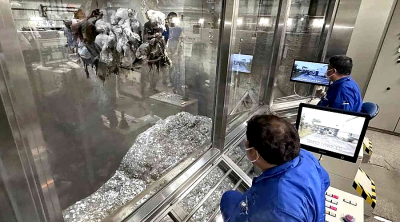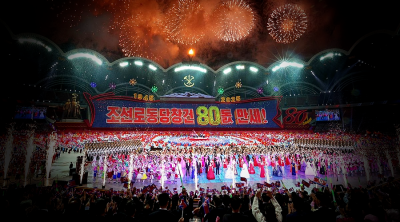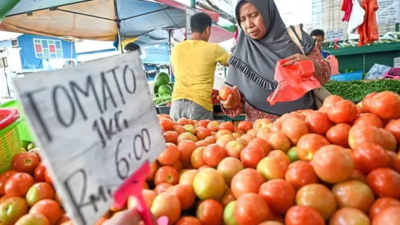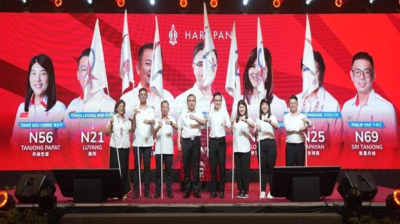The Embassy of Japan will explain Japan’s position in response to Sin Chew Daily’s editorial dated June 28 and an article dated July 10 regarding the release of ALPS-treated water as follows:

■ Comments on editorial dated June 28
The Embassy of Japan would like to explain again Japan’s position regarding the article you posted on June 28 regarding the release of ALPS-treated water into the ocean.
We would like to thank you for posting our explanation in your paper on June 19 about your article posted on June 13 which featured the protest against the discharge of ALPS-treated water to the sea.
However, we are strongly disappointed that the June 19 article is NOT taken into account in the June 28 article at all. We urge you to refrain from reporting opinions without scientific basis and to publish articles based on facts.
First of all, while the June 28 article says, “Is the only way to treat wastewater from the Fukushima nuclear power plant is to discharge it into the sea? Of course not.”
The Government of Japan has been considering how the water stored in the tanks should be handled. Here are the details:
1. At the Treated Water Task Force and the Sub-committee on the Handling of ALPS-treated water (hereinafter referred to as the “ALPS subcommittee”), experts held comprehensive discussions for more than six years.
The discussion included social perspectives such as the influence of rumors.
2. Based on this, the report of the ALPS sub-committee compiled in February 2020 states that five disposal methods (geological injection, ocean release, steam release, hydrogen release and underground burial) were regarded as technically feasible by the treated water task force, and evaluated from the viewpoint of technology, system, timeline, etc.
As a result, (a) geological injection would require a suitable site, and the monitoring methods for this option have not been established; (b) technologies for hydrogen release, such as pre-treatment and scale expansion, have not been established; and (c) underground burial would entail evaporation of water containing tritium during solidification, and it is difficult to predict the duration of this process because it requires a regulatory system and disposal sites.
3. In addition, the report also discusses long-term storage.
Regarding the expansion of storage capacity on the premises, the report admits that there is limited room for increasing the number of tanks beyond the current plan.
This observation is based on consideration on the measures taken so far, such as increasing the size of the tanks and improving the efficiency of the tank layout.
In addition, the report gives consideration to the option to use larger tanks.
While the option would neither make much difference in capacity efficiency per area compared to the current one nor lead to significant increase of the storage capacity, the option would require a longer period for installation and leakage inspection, and result in an enormous leakage if the tank is damaged.
Therefore, the report concludes that there is no advantage to use larger tanks.
In addition, the report discusses that the option of off-site storage is not feasible as it would require the understanding of local governments, etc. where storage facilities are installed, and approval as a radioactive waste storage facility. That means there is no choice but to continue preserving the water within the premises of the Fukushima Daiichi Nuclear Power Plant.
4. Based on these considerations, the report evaluates that the premises should be utilized effectively because the expansion of tanks inside and outside the premises beyond the current plan is limited.
Based on these evaluations, the report describes the disposal method for the water that has been purified to ensure that radioactive materials other than tritium are below regulatory standards for safety (hereinafter referred to as “ALPS-treated water:) using multi-nuclide removal equipment, etc.
Considering the institutional and technical aspects, the report concludes that only steam release and ocean release are realistic options.
The report also concludes that ocean release is implementable more reliably because the method is commonly used among nuclear plants around the world; existing discharge facilities have positive track records for safety; and controlled discharges into the sea can be monitored more accurately.
5. The ALPS sub-committee held discussions and compiled a report on the premise that radioactive materials other than tritium would be purified to a level below the regulatory standards for safety by using multi-nuclide removal equipment, etc.
Regarding the conclusions of this report, the International Atomic Energy Agency (“IAEA”) stated that “the recommendations made by the ALPS sub-committee are based on a sufficiently comprehensive analysis and on a sound scientific and technical basis” and noted that the two options (vapor release and discharge into the sea) are “technically feasible.”
In this way, we would like you to recognize that Japan has reached the conclusion of releasing it into the ocean through many examination processes from a scientific standpoint as described above.
Furthermore, your article says that “The Japanese government and TEPCO explains that they have developed an ALPS (multi-nuclide removal system) jointly with Toshiba to filter out 62 other radioactive elements other than tritium in wastewater. However, this is not the case.
In 2018, information leaked from within TEPCO said the wastewater contained radioactive elements such as tritium, cobalt-60, strontium-90, cesium-137, and carbon-14. Cobalt and strontium are carcinogenic, while tritium and carbon-14 can cause DNA damage in living organisms.”
However, we previously submitted our explanation to you on this point.
As below, we repeat our explanation about the water to be discharged.
1. We wonder why you carried the June 28 article without verifying our explanation.
2. The assessment of radiological environmental impacts of discharging this water was conducted in line with the international guidelines. The result shows that the impact on humans and the environment would be minimal, even with biological concentration and long-term accumulation considered.
The impact on humans is about one-thousandth of the radiation dose received from a single dental x-ray. The methodology and content of the radiological environmental impact assessment was reviewed by the IAEA.
3. TEPCO and a third party organization will inspect all the water before dilution and ensure that the water to be discharged into the sea meets the regulatory standards before the discharge as the results provided in the following URL.
In addition, in the IAEA’s report “First Interlaboratory Comparison on the Determination of Radionuclides in ALPS-Treated Water,” neither the IAEA nor the participating third-party laboratories detected any additional radionuclides other than tritium and radionuclides.
4. The Government of Japan has been taking measures in strict compliance with international law and fully in line with IAEA international safety standards, which have been developed in consultation with the IAEA Secretariat and all IAEA Member States, while continuing to undergo reviews by the IAEA, an specialized international organization for nuclear energy, and will continue to do so in the future.
Therefore, this water does not harm human body as you described. Nevertheless, your paper did not listen to our explanation and spread incorrect information. This is a big problem as a mass media.
As the EOJ mentioned in the previous comment, GOJ and TEPCO will manage the annual discharge volume of tritium, so it will not exceed the target discharge management value for the Fukushima Daiichi (I) Nuclear Power Station before its accident in 2011, namely 22 TBq/year.
While nuclear plants in other countries also discharge tritium in cooling water, the amount of tritium in the ALPS-treated water is relatively small compared to those of nuclear power plants and other facilities in other countries.
For reference, China’s nuclear power plants are releasing tritium into seawater at levels up to 6.5 times more than the planned annual release from Tokyo Electric Power Company Holdings, Inc.’s Fukushima Daiichi Nuclear Power Plant.
Furthermore, you wrote, “As soon as the Fukushima nuclear power plant was destroyed after the earthquake, the sea was already polluted. As the tsunami attacked the 350km coastline, the plant released cesium, a radioactive substance, and severely affected marine ecosystems. The cesium was dispersed throughout the North Pacific due to the collision of the Kuroshio and Oyashio currents, and no fish were caught within a 10km radius of the accident site. Observations over several years have shown that cesium-137 off the coast of Fukushima exceeded 1,000 times the legal limit and caused fish to appear abnormal.”
If you write this kind of article, you should refer to scientific facts.
Radioactive substances such as cesium contained in marine products are constantly monitored and disclosed.
According to this, a total of 190,553 marine product samples have been monitored so far (as of May 30, 2023).
Recently, the proportion of fishery products exceeding the standard value of 100 Bq/kg for radioactive cesium in food has been significantly reduced in all prefectures, including Fukushima Prefecture.
Regarding the standard value of radioactive cesium, the standard set by the Codex Alimentarius (an international organization established by the Food and Agriculture Organization of the United Nations (FAO) and the World Health Organization (WHO) to formulate international food standards) is 1000 Bq/kg.
The US standard is 1200 Bq/kg. The EU standard is 1,250 Bq/kg. All these show that Japan’s standards are very strict.
Furthermore, you wrote, “According to experts, it would take only 57 days for radioactive materials to travel along the ocean currents and contaminate half of the Pacific Ocean if the wastewater from the nuclear power plant were discharged into the sea. Russia, China, Japan, South Korea, Hong Kong, Taiwan, the United States and Canada will all be unavoidable.”
However, simulation (the model range is 490km x 270km) of the diffusion of ALPS-treated water discharged into the sea shows that the concentration of tritium is higher than that of seawater only in the area within 3km of the power station, and the maximum value assessed at the model boundary being 0.00026 Bq/L.
This figure is three to four orders of magnitude lower than the natural background level (about 0.1-1 Bq/L).
The concentration will be even lower outside the boundary due to further diffusion.
The IAEA reviewed this approach and states in the 4th report of the IAEA Task Force issued in April 2023: “The Task Force accepted TEPCO’s reasoning that concentrations of tritium beyond this area will be even lower and therefore there is no scientific justification for redoing the calculations for a larger area.”
Therefore, the countries listed in your article other than Japan will not be affected, and of course neither is Malaysia.
Following the Basic Policy announced by the Government of Japan on 14 April 2021, based on the Terms of Reference (TOR) on a comprehensive framework for reviewing safety related- aspects of handling ALPS-treated water at TEPCO’s FDNS, which was signed on July 8, 2021, a series of review was conducted by the IAEA.
On July 4, IAEA Director General Rafael Mariano Grossi handed over the Comprehensive Report to Prime Minister Kishida and the report was published accordingly.
Executive Summary of the IAEA Comprehensive Report states the following conclusions:
1. Based on its comprehensive assessments, the IAEA has concluded that the approach to discharge ALPS-treated water into the sea, and associated activities by TEPCO, NRA and the government of Japan, are consistent with relevant international safety standards.
2. The IAEA has concluded, based on its comprehensive assessment, that the discharge of the ALPS-treated water to the sea, as currently planned by the TEPCO, will have a negligible radiological impact to people and the environment.
Please refer to the comprehensive report itself and IAEA’s announcement.

■ Comments on the article dated July 10
The Embassy of Japan would like to explain again Japan’s position regarding the article you posted on July 10.
First, regarding the circumstances leading up to the release of ALPS-treated water into the ocean, your paper stated that “The storage facility was overloaded and ‘forced to release’ 1.23 million tons of treated nuclear waste water into the Pacific Ocean.”
Regarding the process leading up to Japan’s decision to release ALPS-treated water into the ocean, please refer to the above comments regarding the process leading up to Japan’s decision to release ALPS-treated water.
Japan has considered the method of discharge with transparency manner. And IAEA stated on this point that “the recommendations made by the ALPS sub-committee are based on a sufficiently comprehensive analysis and on a sound scientific and technical basis” and noted that the two options (vapor release and discharge into the sea) are “technically feasible.”
On July 4, IAEA released “IAEA Comprehensive Report on the Safety Review of ALPS-treated water at the Fukushima Daiichi Nuclear Power Station.”
The independent safety review of Japan’s implementation of its policy against the international safety standards was undertaken on a request from the Government of Japan.
IAEA has concluded in its Comprehensive Report that (a) the approach to the discharge of ALPS-treated water into the sea, and the associated activities by TEPCO, Nuclear Regulation Authority of Japan, and the Government of Japan,are consistent with relevant international safety standards, and that (b) based on its comprehensive assessment, the discharge of the ALPS-treated water, as currently planned by TEPCO, will have negligible radiological impact on people and the environment.
IAEA also mentioned its commitment to engaging with Japan on the discharge of ALPS-treated water not only before, but also during and after the treated water discharges occur, including its additional review and monitoring activities that will provide additional transparency and reassurance to the international community by continuously providing for the application of the relevant international safety standards.
The Government of Japan will continue to provide necessary information to the international community, including China and of course Malaysia in a transparent manner, and strive to foster a greater understanding of the international community regarding the handling of ALPS-treated water.
Actually the following comments were made by the US Department of State.
“The United States welcomes the International Atomic Energy Agency’s (IAEA) report noting Japan’s plans to release treated water from the Fukushima Daiichi nuclear site are safe and consistent with internationally accepted nuclear safety standards. Since the 2011 nuclear accident, Japan has proactively coordinated with the IAEA on its plans and conducted a science-based and transparent process. We look forward to Japan’s continued cooperation with the IAEA as its process moves forward.”
And the South Korean government announced its own verification results regarding a plan to release ALPS-treated water into the ocean, which is of the view that it meets international standards such as those of the International Atomic Energy Agency (IAEA).
We will continue to strive to foster understanding among countries.
The Embassy of Japan, Malaysia
Read also:
- Fallout from Fukushima radioactive wastewater
- Letter to the Editor from the Embassy of Japan on the release of ALPS-treated water
- Another scenario for Fukushima wastewater problem
- Radiation is all around us: On the safety of Japan’s release of ALPS-treated water
- Countering concerns about the release of ALPS-treated water
ADVERTISEMENT
ADVERTISEMENT








































